The National Center for Earth and Space Science Education (NCESSE) is proud to introduce the National Step 2 Review Board for SSEP Mission 3 to the International Space Station (ISS). On November 27 and 28, 2012, the Board met at the Smithsonian’s National Air and Space Museum, in Washington, DC, to review 51 finalist proposals for student flight experiments submitted from across the network of 17 communities participating in SSEP Mission 3 to ISS. Listed below are the 17 Board Members—scientists, engineers, and science educators from academia, federal agencies, commercial entities, and national science education non-profits.
For Mission 3 to ISS, a total of 12,800 students in the 17 participating communities were given the opportunity to design real experiments to fly aboard the ISS. There were a total of 1,466 proposals submitted by student teams, reflecting 7,200 students formally engaged in experiment design, and 441 proposals were forwarded for review by SSEP Step 1 Review Boards in the communities. Each of these local Boards selected 3 finalist proposals for submission to the SSEP National Step 2 Review Board.
For Step 2 review, the Board Members were divided into five teams, each comprised of both researchers and science educators, and each team responsible for review of proposals from 3 to 4 SSEP communities. Board Members selected 17 flight experiments. The Board Members spent a great deal of time providing thoughtful comments for all 51 proposals, which were forwarded to the proposing student teams by NCESSE. The review went well beyond what is typical of reviews for professional research proposals given there was a deep recognition that the process, and the comments back, were vitally important teachable moments for the student researchers that worked so hard on their proposals. Through SSEP, we want to immerse students in real science. The review process is very much a part of real science, and that process therefore needs to be transparent, and a learning experience.
NCESSE reviewed all comments from the Step 2 Review Board to assess if there were any outstanding questions that needed to be addressed by the selected student flight teams, and on December 7, 2012, NCESSE formally notified each community of their selected flight experiments.
You are invited to explore the selected flight experiments and honorable mention finalist experiments for Mission 3 to ISS.
A Note to All Mission 3 Student Research Teams
To the thousands of students that participated in SSEP Mission 3 to ISS, regardless of whether your proposal was selected for flight, and regardless of whether it formally went before a Review Board, it is important to recognize the endeavor in which you’ve been engaged – real science. This is how real research proceeds from opportunity, to defining a proposed research program, to submission of a proposal, to formal proposal review and selection. In the professional world, comments back from the Review Board allow a team to rethink and refine their proposed research, so they can submit a better proposal for the next opportunity. We have indeed had SSEP student teams that did not get selected for spaceflight the first time, but did get selected with a refined proposal as part of their community’s next flight opportunity.
Reflect on the overall experience, and recognize that you and your team owned this process – you came up with a microgravity experiment of interest to you, and designed it to fly in a research mini-lab that has a very real set of constraints on its operation. So get excited about what you’ve achieved, and get excited about science, technology, engineering, and mathematics (STEM). We challenge you to seek out new opportunities in STEM where you can be curious and take ownership … in the journey.
Finally, recognize that YOUR COMMUNITY now has an experiment destined for the International Space Station, that you are part of this historic adventure, and now you and your community can rally around your flight experiment and root for its success.
The SSEP National Step 2 Review Board for Mission 3 to ISS—
1. Dr. Paul Byrne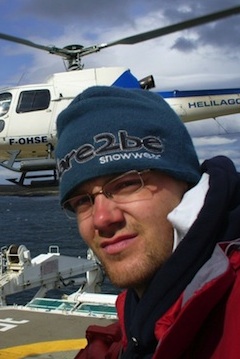
Dr. Paul Byrne is a postdoctoral research fellow at the Carnegie Institution of Washington’s Department of Terrestrial Magnetism, working on NASA’s MESSENGER mission to Mercury. His areas of interest include all aspects of the development of planetary surfaces, including volcanism, tectonism, and impact cratering. He has carried out fieldwork on volcanoes in France, Italy, and Spain and throughout the Indian Ocean, has expertise in remote sensing, image analysis, geographic information systems (GIS), laboratory modeling, and field skills, and has published on volcanic and tectonic systems on Earth, Mars, Venus, and Mercury. Byrne also has a strong interest in space mission design, participating in the 2007 ESA mission design Summer School in Alpbach, Austria, and the 2012 NASA JPL Planetary Science Summer School, helping to design missions to Europa and Venus, respectively.
2. Dr. Dan Crooks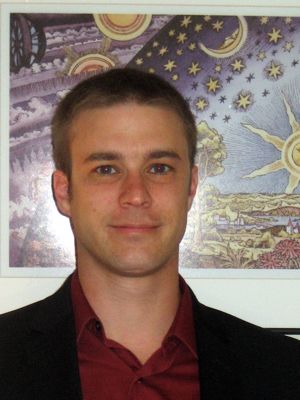
Post-Doctoral Fellow, National Institute of Child Health and Human Development
Dan Crooks is a Post-Doctoral Fellow at the National Institute of Child Health and Human Development. He completed a B.A. in Molecular, Cell, and Developmental Biology, and an M.S. in Environmental Toxicology at the University of California at Santa Cruz, where he developed an interest in the roles of metals in cellular processes and in human diseases. Dan recently completed a doctorate in Biochemistry from Georgetown University, where he studied the molecular mechanisms of cellular iron homeostasis in developing red blood cells and in human mitochondrial myopathy. He is currently pursuing further research questions on the tissue specificity and mechanisms of human mitochondrial diseases, and preparing for a career that will involve both intense basic research and science education.
3. Dr. Lisa A. Fitzgerald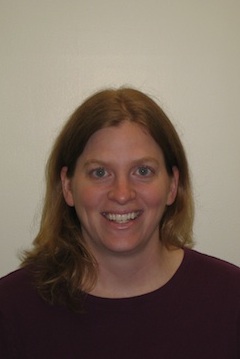
Research Chemist, Naval Research Laboratory
Lisa Fitzgerald received her Ph.D. in Chemistry from the University of Nebraska-Lincoln where she used comparative genomics to understand the diversity of algal viruses. Upon graduation, she worked at the National Institute of Standards and Technology to develop decontamination methods for biological threats in drinking water systems. Two years later, she became a National Research Council Postdoctoral Associate at the Naval Research Laboratory (NRL) investigating microbial electron transfer methods as well as developing a pre-treatment method to enhance swine waste for biofuel production. Her postdoctoral associate position later transitioned into a full-time position at NRL as a Research Chemist.
4. Dr. Kelly Gemmill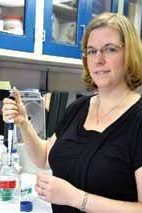
Research Biologist, US Naval Research Laboratory
Dr. Kelly Gemmill received her Ph.D. in tumor biology from Georgetown University in 2007 and is currently a research biologist at the US Naval Research Laboratory in Washington D.C. Her current research focus is in nanobiotechnology, specifically utilizing quantum dot nanoparticles in biosensors and cellular imaging applications. She has an extensive background in biochemistry, molecular and cellular biology and nanotechnology.
5. Dr. Jeff Goldstein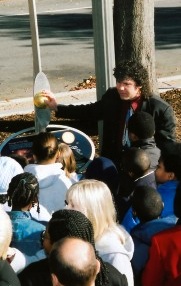
Program Director, Student Spaceflight Experiments Program (SSEP)
Center Director, Astrophysicist, National Center for Earth and Space Science Education (NCESSE)
Dr. Jeff Goldstein is the creator of SSEP, and its Program Director. He is also the Center Director for the National Center for Earth and Space Science Education (NCESSE), and the Institute Director for the Arthur C. Clarke Institute for Space Education. Jeff is a nationally recognized science educator, and planetary scientist, who has dedicated his career to the public understanding of science and the joys of learning. He oversaw the creation of the Center’s national science education initiatives, including the Voyage National Program. He led the inter-organizational team that permanently installed the Voyage model Solar System on the National Mall in Washington, DC. He is a blogger at the Huffington Post, and writes Blog on the Universe. His planetary science research includes the development of techniques for measuring global winds on other planets using large telescopes on Earth. His research has produced the first direct measurement of the global winds above the clouds on Venus, and the first measurement of the global winds on Mars.
6. Stacy Hamel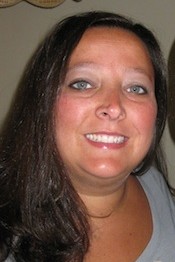
Flight Operations Manager, Student Spaceflight Experiments Program
Education Program Manager, National Center for Earth and Space Science Education (NCESSE)
Stacy Hamel is the National Program Manager for the Student Spaceflight Experiments Program. Her previous experience at NCESSE includes co-directing the Voyage National Program – a national public education and outreach program that is installing replicas of the Voyage Scale Model Solar System located on the National Mall in Washington, DC, in communities worldwide. Stacy also co-directed many of the Center’s other Educational Programs including Journey through the Universe – a national initiative that engages entire communities—students, teachers, families, and the public—using education programs in the Earth and space sciences and space exploration that inspire and educate. Over 200,000 grade preK-12 students have participated in Journey through the Universe.
7. Michael Hulslander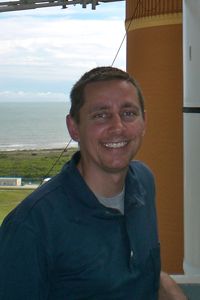
Manager of Onsite Learning
Smithsonian National Air and Space Museum
Michael is responsible for science education at the Smithsonian’s National Air and Space Museum. He also manages the How Things Fly gallery, Moving Beyond Earth gallery, the Public Observatory Project and the Explainers Program. How Things Fly teaches visitors about the science of flight. Moving Beyond Earth is an immersive exhibition placing visitors “in orbit” during the shuttle and space-station era. At the Public Observatory visitors explore craters on the Moon, spots on the Sun, the phases of Venus, and other wonders of the universe using a 16-inch telescope. The Explainers Program gives high school and college students the chance to work at the National Air and Space Museum. Michael has worked in museums and zoos for more than 25 years, researching, writing, presenting and evaluating science programs for school groups, families and the general public.
8. Dr. Rosemarie Hunziker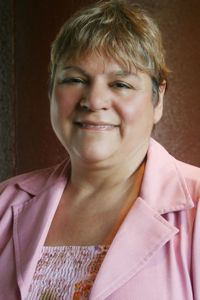
Program Director, Division of Discovery Science and Technology
National Institute of Biomedical Imaging and Bioengineering, National Institutes of Health
Dr. Rosemarie Hunziker is the Program Director of the Division of Discovery Science and Technology in the National Institute of Biomedical Imaging and Bioengineering at the National Institutes of Health. Her current research concentrates on investigating technologies to develop functional cell, tissue, and organ substitutes to repair, replace, or enhance biological function either in vivo or in vitro. This multidisciplinary field draws upon and integrates advances in biomaterials, cell and developmental biology, physiology, high throughput assay development, imaging, computational modeling, bioreactor design, and novel engineering methods.
9. Maureen Kerr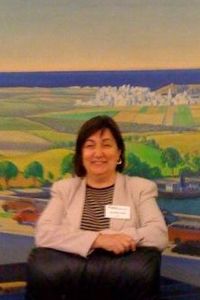
Chair, Education Division
Smithsonian National Air and Space Museum
Maureen Kerr is the Chair of the Education Division at the Smithsonian National Air and Space Museum. In this position, Kerr oversees the education programs at the National Mall Building in Washington, DC and the Steven F. Udvar-Hazy Center in Chantilly, VA, as well as electronic outreach with national and international audiences. The Education Division provides direct programming to more than 600,000 participants, annually. Kerr received a Masters of Arts in science education from the University of New Mexico and a Bachelor of Arts in psychology from the University of Maryland.
10. Dr. Christian Klimczak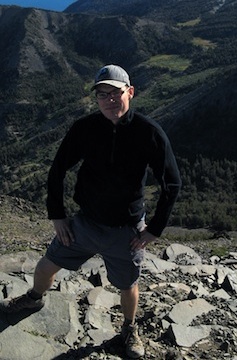
MESSENGER Postdoctoral Fellow, Carnegie Institution of Washington
Dr. Christian Klimczak is a MESSENGER postdoctoral fellow at the Carnegie Institution of Washington currently focussing on geological processes on the planet Mercury. He received his Ph.D. at the University of Nevada, Reno with emphasis on rock fracturing processes throughout a variety of tectonophysical settings on the rocky planets. His current research ties together various aspects of the volcanic and tectonic evolution of Mercury and the Moon. He is also interested in characterizing the scaling-behavior and geometric properties of several types of rock fractures using field-based methods and photogeologic interpretations.
11. Dr. Tim Livengood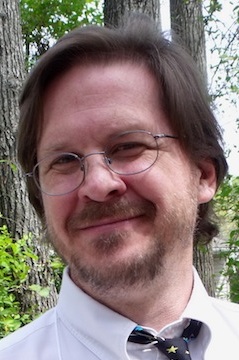
Adjunct Space Science Researcher, National Center for Earth and Space Science Education
Research Scientist, University of Maryland Department of Astronomy
Dr. Tim Livengood is a senior advisor to SSEP and adjunct research scientist with the National Center for Earth and Space Science Education. He is a research scientist with the University of Maryland Department of Astronomy and works at NASA’s Goddard Space Flight Center. Tim has been a presenter and team leader for the Center’s public and school programs and has visited hundreds of classrooms. His current research uses a neutron-detecting instrument on the Lunar Reconnaissance Orbiter to measure deposits of water on the Moon, and uses infrared spectroscopy from telescopes on Earth to measure composition, temperature, and wind velocity in the atmospheres of other planets.
12. Dr. David Loeb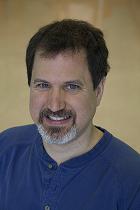
Associate Professor, Oncology and Pediatrics
Johns Hopkins University School of Medicine
Dr. David Loeb has been a pediatric oncologist since 2000. His clinical interests are diverse – he is a member of the bone marrow transplant team, and Director of the Musculoskeletal Tumor Program. In addition to clinical work, he also runs a research laboratory with several active areas of research. A core research program investigates the role of a transcription factor known as WT1 in the biology of sarcomas – tumors of connective tissue. The leading hypothesis is that WT1 regulates the expression of a broad array of pro-angiogenesis genes, and WT1 therefore promotes tumor growth through increasing the blood supply feeding cancer cells. The lab is currently designing a fluorescence-based high throughput screen for small molecule WT1 inhibitors that might be of use in treating WT1-expressing solid tumors. Another important area of research is the identification and targeting of Ewing sarcoma stem cells, with research currently focusing on a) the role of the RNA helicase DDX3 in Ewing sarcoma biology, and b) the role of the Wnt signaling pathway in regulating the growth of Ewing sarcoma and osteosarcoma.
13. Dr. Sanda F. Rajaonson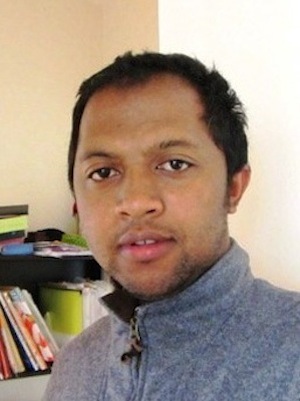
Université Libre de Bruxelles, Belgium and University of Antananarivo, Madagascar
Dr. Sanda Rajaonson received his Ph.D. in Biological Sciences from the Université Libre de Bruxelles, Belgium and the University of Antananarivo, Madagascar through a joint program between the two institutions. His doctoral thesis focused on the inhibition of virulence gene expression in Rhodococcus fascians and Pseudomonas aeruginosa, as a culmination of years of research on the virulence of pathogenic bacteria. During his career, he has developed his interest in finding alternatives to battle the problem of multi-drug resistance in pathogenic bacteria. His next step is to continue his research in the areas of microbial genetics, host-microbe interaction and cell-to-cell communication in bacteria in order to improve his understanding of the molecular mechanisms of bacterial pathogenesis.
14. Dr. Karyn Rogers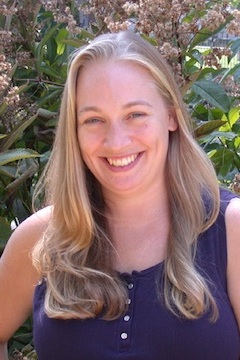
Geophysical Laboratory, Carnegie Institution of Washington
Karyn Rogers is a Research Scientist in the Geophysical Laboratory at the Carnegie Institution of Washington. Karyn’s research focuses on physiology, diversity, in situ growth conditions and bioenergetic requirements of extremophilic microbes. She uses modern extreme environments on Earth as model systems to better understand habitability throughout the solar system. Karyn’s PhD research focused on the shallow submarine vents of Vulcano Island, Italy, and she has also worked in the fumaroles of Cerro Negro Volcano, Nicaragua, the hot springs in Yellowstone National Park, the Campi Flegrei solfatara system in Italy, and the deep sea vents of the East Pacific Rise and the Eastern Lau Spreading Center. Her most exciting field experience was a dive aboard the deep submersible vehicle, Alvin in 2008. Karyn received her PhD in Earth and Planetary Sciences from the Washington University in St. Louis in 2006, following an AB in Environmental Science & Public Policy and Earth & Planetary Science from Harvard University and an MS from Stanford University in Geological and Environmental Sciences. Karyn was a Deep Ocean Institute Postdoctoral Scholar at Wood Hole Oceanographic Institution and an Assistant Professor in the Geology Department at the University of Missouri before starting at the Carnegie Institution in 2011. Karyn lives in the Washington DC area with her husband, a planetary geochemist, and their dog, Denali.
15. Dr. Alex Theos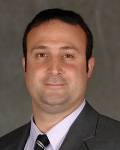
Assistant Professor, Georgetown University
Alex Theos is an Assistant Professor at the Department of Human Science in the School of Nursing And Health Studies at Georgetown University. His research interests include the biogenesis of specialized organelles, focusing on the intracellular membrane trafficking pathways. Currently, his research lab is working to understanding the cell biology of the GPNMB protein, which is associated with diverse pathologies including melanoma and pigmentary glaucoma.
16. Dr. Hemayet Ullah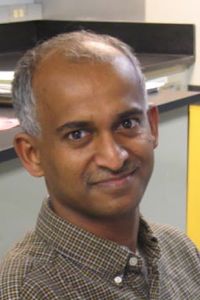
Associate Professor, Department of Biology, Howard University
Prof. Hemayet Ullah is an Associate Professor at the Department of Biology in Howard University. His research interests are in the field of plant biology, especially plant cell signaling, environmental stress physiology, and plant molecular and cellular biology, with current emphasis on unraveling the signaling pathways of extracellular signals inside the cell.
17. Dr. Shoshana Weider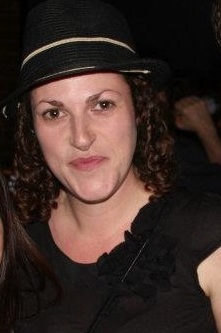
Planetary Geologist, Department of Terrestrial Magnetism
Carnegie Institution of Washington
Shoshana Weider is a planetary geologist currently working at the Department of Terrestrial Magnetism of the Carnegie Institution of Washington as a MESSENGER Postdoctoral Fellow. Following her undergraduate Earth Sciences degree at Oxford University, she completed her Ph.D. in Lunar Geology at Birkbeck College/UCL and the Rutherford Appleton Laboratory. She specialises in geochemical remote sensing techniques from planetary missions to terrestrial planets, mainly the Moon and Mercury. Shoshana also is a junior editor for Form & Content Media Ltd, where she helps run the-briefing.com, a R&D news website, and edits articles for SPIE Newsroom.
